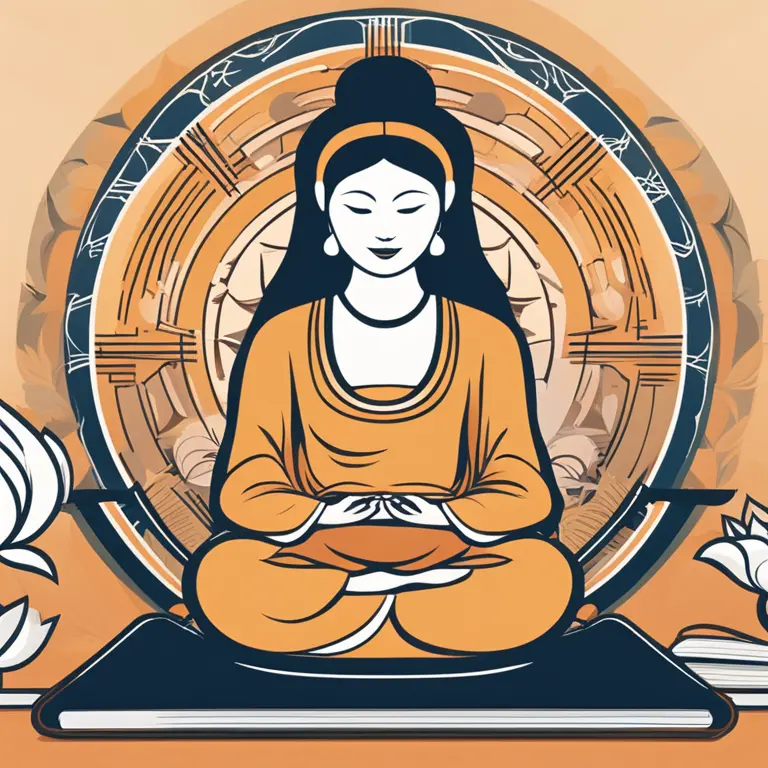
The Most Effective Meditation Techniques for Modern Life
In search of peace and clarity in the digital age, this article explores several meditation techniques and their effectiveness for contemporary practitioners.
article by Hina Kurosawa
Introduction to Meditation
For centuries, meditation has been a cornerstone for those seeking tranquility and enlightenment. Fast-forward to the 21st century, and meditation has transitioned from ancient traditions to become an essential tool for coping with the stresses of modern life. This article delves into different techniques, analyzing which could be the most effective in today's fast-paced environment. Whether you're new to meditation or a seasoned practitioner, understanding these methods can enhance your practice and bring deeper benefits.

Mindfulness Meditation: Present Focus
Mindfulness meditation is the practice of being fully present with one's thoughts and surroundings. This technique encourages awareness of your current experience without judgment. Studies continue to reveal the positive impact of mindfulness on mental health, concentration, and stress reduction, making it an invaluable practice for coping with the constant flow of information in the digital era.

Transcendental Meditation: Effortless Mantras
Transcendental Meditation (TM) involves silently repeating a mantra, a practice that can transport individuals into a state of deep relaxation and restful alertness. TM has gained popularity for its reported benefits in reducing anxiety and chronic stress, as well as improving heart health. It is a structured approach that can be beneficial for those seeking a consistent and researched-backed meditation routine.

Zen Meditation: Simplicity and Discipline
Zen meditation, or Zazen, emphasizes sitting in a comfortable position and focusing on breathing while observing one's thoughts without attachment. Rooted in Buddhist philosophy, Zazen aims for simplicity and discipline. Practitioners often find this method conducive to gaining insights into the nature of existence, thereby making it effective for those seeking a spiritual and contemplative practice.

Guided Visualization: Creative Engagement
In guided visualization, individuals are led through a mental journey, often by a recording or instructor, to evoke calm landscapes or healing scenarios. This form of meditation can be particularly effective for those who may struggle with traditional silent meditation, offering an engaging alternative that harnesses the power of the imagination to achieve relaxation and mental clarity.
Yoga and Movement Meditation: The Kinetic Path
Meditation does not always involve stillness. Yoga and other movement-based practices incorporate meditative elements within physical activity. These practices improve flexibility, strength, and body awareness while simultaneously fostering a meditative state of mind. They are especially effective for those who find peace through kinetic expression and are looking for a holistic approach to wellness that addresses both mind and body.
Conclusion: Personal Suitability
What emerges most prominently from exploring these techniques is that the most effective form of meditation is subjective. It is tailored to one's personal lifestyle, preferences, and goals. Therefore, while mindfulness might suit the multitasker, Zen may resonate with the contemplative philosopher, and TM could be a haven for those seeking structured peace. Ultimately, the effectiveness of a meditation technique is measured by its resonance with the practitioner and the consistency of their practice.
Published: 1/14/2024
Modified: 1/15/2024
More predictions
Come back here soon to learn more about yourself and your future


Calming the Storm: Mindfulness Meditation for Anger
Discover how mindfulness meditation can be a powerful tool for anger management, promoting inner peace and emotional balance.


Mindfulness Meditation: A Handbook for High Schoolers
Discover how mindfulness meditation can benefit high school students, enhancing focus, reducing stress, and promoting overall well-being.


Easing Loneliness with Mindfulness Meditation
Explore how mindfulness meditation can provide solace and connection to alleviate the feelings of loneliness.